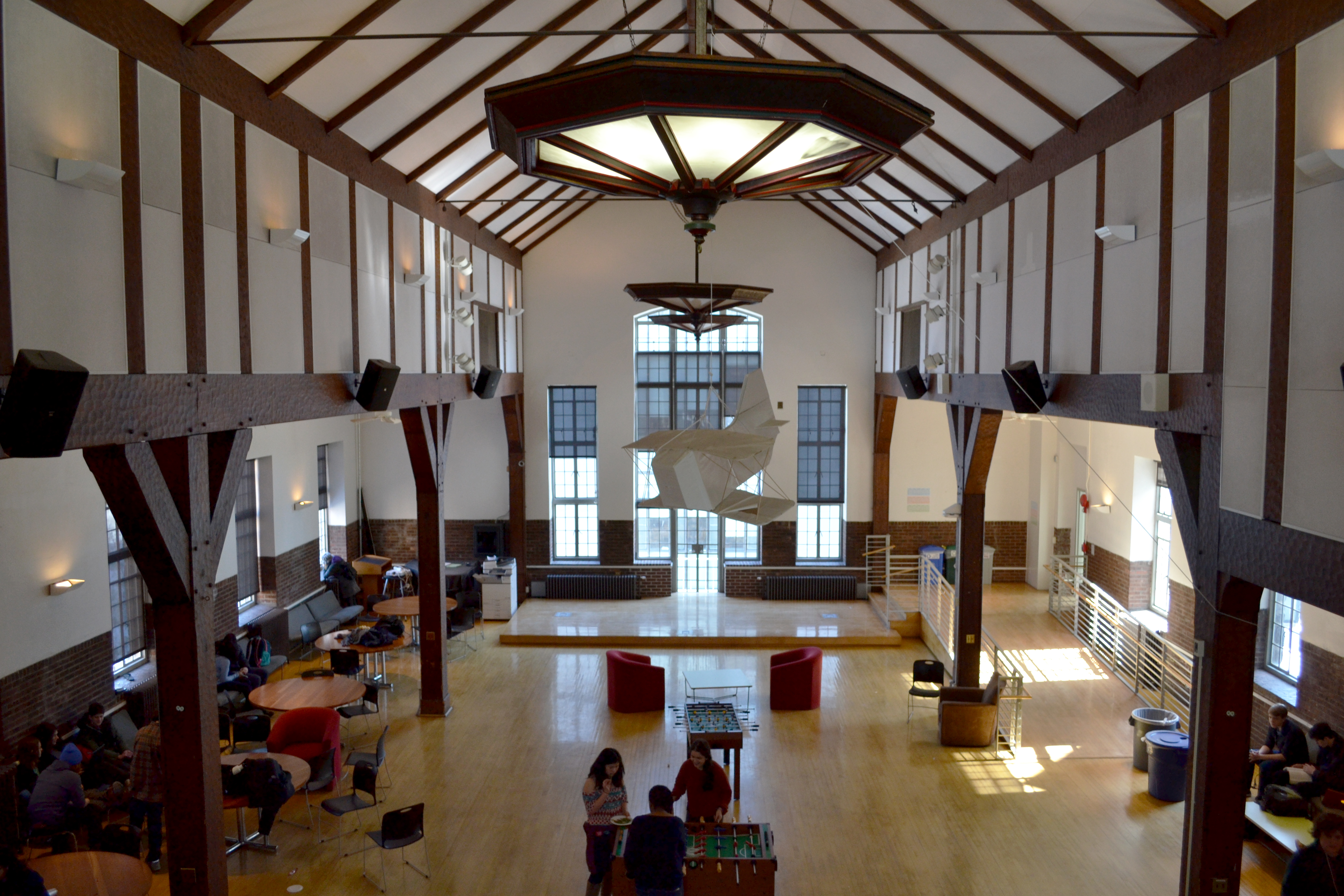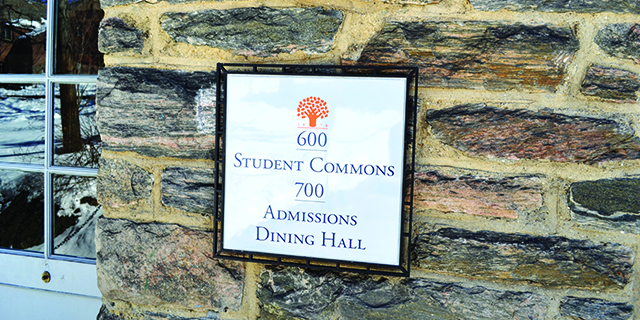
At this point, most of the Fieldston community is aware of plans to convert the Student Commons into a multifunctional space that could be used as a cafeteria for the Middle School. Last week, Middle School Principal Kevin Jacobson, Upper School Principal Laura Danforth, and Director of Strategic Planning and Board Relations (a liaison of sorts between the Head of School and the Board of Trustees) Sarah Danzig-Simon announced a meeting with students taking place on Monday, February 23. The meeting will update students on the current status and future steps of the project as well provide a space for questions and feedback. Ms. Danzig-Simon will also be available in the cafeteria for the rest of the week to continue this discussion with students.
This recent increase in outreach efforts by the administration regarding this project has come after The Fieldston News broke the story in a controversial editorial article and the administration responded via email. As messy as it has been, Mr. Jacobson refers to all that has transpired as “a perfect storm…because [for him] the backlash helped in terms of some lessons learned and some good reflection.” He, along with some other members of the administration, feels that this perfect storm, although containing miscommunication about transparency and Upper School inclusion, has now led to a re-evaluation and an inclusive, happy ending for the story of the Commons. Others feel that the storm has been less perfect.
Plans to alter the Commons have been in the works long before any storms rocked the Fieldston campus this winter. For Dr. Fernandez, the idea for the Commons’ conversion can be traced back to the Strategic Plan, which “calls for the school to look at all its spaces… guided by the notion that world-class learners and world-class teachers deserve world-class spaces.” This part of the Strategic Plan entails altering the physical spaces of the Fieldston campuses in order to make them available for the most progressive and successful types of learning possible.
Dr. Fernandez shared that it was during the Master Planning process that these ideas manifested themselves in the view that the Commons was a space whose potential was being underutilized. Last fall, according to Mr. Jacobson, a request was put out to collect proposals for various improvements to the school from multiple architectural firms throughout New York City. After narrowing down 10 proposed firms, the firm FXFOWLE was chosen to spearhead the projects.
Last spring, various administrators performed walkthroughs with members of FXFOWLE, looking at Fieldston spaces for areas of potential change. It was during that conversation that Mr. Jacobson said he first brought up the issue of overcrowding the middle school lunchtime. Ms. Danforth said she began her involvement in the process with a similar walk-through and conversation with FXFOWLE.
“We talked about redesigning [the Commons],” Danforth said, “as a real student commons with a snack bar, and more furniture, and maybe a screen with CNN on it, all kinds of things.”
This fall, Dr. Fernandez asked that Mr. Jacobson’s annual “Work Plan,” with ideas and goals for the academic year, be tied to the Strategic Plan.
“I wrote a proposal in October,” Jacobson said, “that combined re-centering ethics with an idea for a middle school advisory program with using The Commons as an eatery so that we could do some special programming while kids are eating lunch in a less chaotic, frenetic space.”
Mr. Jacobson’s original hopes in altering the Commons were not only to create a better lunchtime routine for the Middle School, but in fact to tie it into and improve their ethics program as well, although this is no longer part of the plan.
Mr. Jacobson says that after it was brought up and approved at a board meeting in November, his vision of changing the Student Commons with minimal cost and maximum speed moved to a spot of higher priority and began to take shape. Interviewed together, Mr. Jacobson and Ms. Danforth portrayed the evolution of this proposal as something very collaborative between the two of them. in which Mr. Jacobson’s call for a new Middle School lunch space and Ms. Danforth’s preexisting hopes of altering the Commons for the better began to fuse.
The next step was to create a committee examining the Commons and Cafeteria and the ways that both spaces could be used multi-functionally throughout the day in the most productive ways possible. These changes would also hopefully alleviate the school of a possible code issue, that, according to Dr. Fernandez, arises from the fact that the cafeteria might be exceeding its maximum occupancy during lunch periods.
In late November, Mr. Jacobson sent an email to all Middle School faculty calling for representatives, hoping to create a small committee of three representatives that FXFOWLE said would be prudent. However, this email also reached crossover Middle / High School teachers, resulting in news of the Commons’ upcoming conversion spreading through the Upper School teacher network. Many were caught off guard at just then hearing of these plans to change a space so central to the Upper School program and upset at not having been included in any part of these decisions.
One Upper School faculty member shared that surprise at seeing this email was tied to the fact that it didn’t seem to recognize the importance of the Commons to the Upper School program. The faculty member also brought to light a discrepancy in the role Ms. Danforth played in this process.
“When I heard about it, I [was thinking,] ‘What’s going on, we use the Student Commons all the time,’” the faculty member said. “It’s my understanding that Laura did not know anything about this until that email was sent…there had certainly been conversations about a snack bar for the Student Commons, better furniture, things like that, but there was nothing ever discussed with any Upper School faculty members or with Laura Danforth about the Middle Schools plans for the Student Commons until that email.”
As a result of upset in the Upper School, Mr. Jacobson said, it was decided that the committee should be a shared, collaborative experience between the Middle and Upper School. So, in addition to Middle School faculty members Rochelle Reodica, John Kurtz, and Fletcher Crossman, Upper School representatives Laura Danforth and Nancy Banks and additional team members that include Bill Guerrero, (Head of Dining Facilities) Michael Hwang (Chief Financial Officer), Evin Lederman (Director of Facilities), and a designer from FLIK joined the committee. At this time there are no student representatives on the committee.
The description of the committee’s proceedings thus far also differ slightly depending on whom is asked. Mr. Jacobson said that it has met a few times, and that “there has been some reassessment and reevaluation, and where we are at this point is trying to come up with [designs].” He shared that some central questions being addressed now are the ways in which the food would make its way into the Commons, what this plan would require of facilities, and if it would instead be possible to change the schedule to accommodate more lunch periods in the Cafeteria instead of altering the Commons. He stressed that these plans are still very much in the works.
The same faculty member, who is familiar with the situation, said that full committee has only met once, in December. The faculty member shared that much of this discussion focused on laying out and reconciling both the necessities of another Middle School lunch space due to code violations and the importance of the Commons to Upper School programs such as rehearsals, MADs, and the History Fair.
“A compromise was reached,” this person said, “the spirit of which was that the Middle School would use the Commons for about 90 minutes a day, four days a week, for one grade to have lunch.”
The road that has led to current dissent about the Student Commons’ conversion has not been an entirely clear one. And neither are opinions on whether the process truly lacked transparency. Dr. Fernandez does not see a lack of public participation, mostly due to the fact that he views this project as an offshoot of the Strategic and Master planning processes that did have many public forums.
“I think the Strategic Planning process was so transparent, a very Fieldston process — inclusive, belabored, conversational,” he said. “The Master Planning process was very open — Town Halls, surveys, moments of engagement, a representative committee, a charrette with students.”
Disagreement, however, lies in the fact that although the Strategic and Master Plans in which the Commons’ conversion originated might have been transparent, there hasn’t been an opportunity for the public to discuss this specific project.
“I do think the Upper School was totally kept in the dark,” said the previously mentioned faculty member, “there was a Master Plan presentation that a lot of us went to, and sure the Commons was in that presentation, but they didn’t talk about it as a priority. It wasn’t emphasized… it was presented to us as ‘Here are a bunch of different things we could do, none of this is decided.’ I think the issue is that they’re saying that it was presented as a done deal, when that’s not really the case.”
Ms. Danforth sees how this specific faction of the Master and Strategic plans could feel distanced from the student body.
“I get that it didn’t feel transparent,” she said, “and [administration members] have apologized that the Upper School knew in such a back-door kind of way.”
Dr. Fernandez agrees that any increased form of student and faculty involvement is beneficial.
“What I think we can always do better as a community is communicate,” he said.






